(Iran Ethnicities in Details – Part 1 – Mazani and Gilak Ethnicity)
People are the most precious belonging of a country because without them it would not have any meaning at all. In Iran from north to south, east to west, a population of almost 80 million of different ethnicities and races is living. With so many like and unlike beliefs, religions, traditions, characteristics, and traits. Each part of this vast land has a predominant ethnicity, enjoying the unsparing bliss the Earth is devoting them. To see their distribution and learn a general concept of the most popular ethnicities in Iran tap this link.
In this series of articles, we are going to learn about each in detail. The first group is dedicated to Mazani and Gilak ethnicity. Mazanis and Gilaks are the people living in the green land of Iran, along the Caspian Sea. I’ll be glad to take you with me on a short journey of learning more about these two ethnicities which have a lot in common.
Mazandarani People – Also Called Mazani or Tabari
Mazani people have a background in Tabari ethnicity and speak Mazani. Their origin goes back to Tapur people. So their land was called Tapuria, the land of Tapurs. Tapurs were made to migrate to the south coast of the Caspian Sea during the Ashkani dynasty. That’s why in ancient history Tapurs are not the original residents of the Caspian Hyrcanian Forests.
Mazani people occupy four percent of the population in Iran, about 3 to 4 million. Almost all of them are Shia Muslims. It’s a common belief that Mazanis only live in Mazandaran Province. But they are, in high numbers, scattered in three provinces, Mazandaran, Gilan, and Golestan, among which Mazandaran has the largest population of all. Besides, Some small cities at the foot of Damavand Mount, in Tehran, are Mazani. A couple of villages in Semanan, speak some dialects of Mazani language, too.
The exquisite climate with plain lands, Hyrcanian forests, grasslands, Coasts, and highlands, this variety has made Mazandaran a top attraction.
Gilak People – Also Called Gils or Gilaks
Gilak people or Gils live on the south coast of the Caspian Sea in Gilan province. Gils speak one of the north-west Indo-European languages. In the first or second century before Christ, they migrated to these lands to live along the Sefid-Rud river which those days was called Amardus. Research shows Gilaki and Mazani languages have common roots with Caucasian languages.
Characteristics and Traits of The Gil And Mazan Ethnicities
The same as Mazandaran, Gilan is an area from plainlands to highlands. The variety brings about highlighted traits among them.
Cooperation and Association
If you take a close look you can see the association in every aspect of their lives. for instance, the melodies, they sing in groups while proceeding every process of their farming. In different months of the year, men and women, hand in hand, work together for their living. And create a picturesque view of cooperation and association. This is why Gilak women, as well as men, are skilled at using harsh tools such as axes and sickles. And at the same time, they perfectly manage their indoor tasks.
Liveliness and Cheerfulness
Geographical position, luscious flora, high humidity, access to the sea, and many other factors have had an impact on Gilak people. They are lively, cheerful, vibrant, and active. Their spirit is kind of different from what you can see in other parts of Iran. Hajj Sayyah visited Gilan during Naser al-Din Shah Qajar. He believed because of the high precipitation and the humid climate Gils tend to be more credulous and superstitious.
Their cheerfulness can be seen in their clothing, too. Women wear vibrant long gathering skirts with colorful stripes, a shirt, and a vest on it, plus a scarf they call “Lachak”. As women did a lot of hard work they had a large piece of square cloth called “Chadeshow” to wrap around their waist and butt to keep their body warm and protected. The men wore pants which they call “Tumon”, a shirt and a vest, “Jardagheh”, on top. To keep their head, waist, and feet warm they wore woolen hats, sash belts, and long woolen socks.
Friendliness and Hospitality
Gilan has been a host for many migrant ethnicities from different parts of the world. Such as Mazdak people and Alawites. During the world war, Gilan hosted the Polish and Russians, too. Gilaks have been famous for their hospitality and friendliness toward their guests. The guests felt in their bones they were in good hands and it is still the same.

They had no belief intolerance. Gils always have had open arms regardless of their guests’ beliefs, religion, or customs. Years ago when many people had conflicts with people of different religions, the Gil lived peacefully with Armenian immigrants who were Christians. They treated them as their Muslim brothers and sisters.
You can also see this in their marriages. They had no problem marrying among different ethnicities, unlike many others who had the strict tradition of marrying among their own people.
Feeling Secure and Optimistic Toward The Future
In comparison to drylands in Iran, where the allies are narrow and the walls are long, still, you can see houses with short walls in Gilan. Drylands have been in exposure to invasions and attacks over the years. So they had to think of ways to protect themselves and their possessions.
On fertile and productive lands of the north people live in bliss and abundance, this is why they feel secure about the future. Therefore they tend to be more down to earth and simple in their behavior. Gils are not acquisitive and greedy because they have never experienced drought and famine. So this completely makes sense why they have less tendency to gather gold and make investments. In contrast with them, people living in the center of Iran have experienced long periods of no-water so they are always considering tomorrow in fear of famine and drought.
Gastronomy
Another bold trait is their gastronomy. Gilaks have a good taste in food and their flavourful food variation is famous. Most of the foods are cooked from fresh local ingredients.
Customs and Traditions of The Gil and Mazan Ethnicities
Varf-Chal – Snow Hole
Varf in Mazani means snow and Chal mean hole. The roots of This tradition go back to 600 years ago, during the Buyid dynasty. The tradition is yet alive. Every year, one day in the midst of May, men of the village get together in the spot, and dig a big hole in the ground, 10 -12 meters deep and 7-10 meters wide. They put the big frozen snow-chunks in the hole. Eventually, the hole full of the ice would be covered by Haulm. The hole and the haulm slow down the melting process. So this would be their source of water in the coming months.
In the past, this tradition was so important because there were not many springs to supply the water they needed. But nowadays it is more of a belief derive. Many believe by doing the tradition their village would be safe from undesired incidents and their lives would be blissful.
Other than this tradition that is especial to some villages in Amol, other people in the north used to dig smaller holes and saved snow to used it as their fridge to keep meet fresh.
Matriarchy Tradition
On the same day of Varf-Chal when men get out of the villages, the village will be women’s. It’s the matriarchy day. Women choose one among themselves as the king. Someone who is stronger and better in management. No man is allowed in the town that day except the sick and the very old. Even in that case, their families have to pay a penalty which is mostly food. And there is one condition; they are not allowed to come to balconies or behind the windows.
After men are gone, women take off their scarfs, wear beautiful clothes, sing and dance. The mother king chooses who plays what role. She chooses some younger women to wear men’s military clothes. They will be in charge of keeping everything under control. No one can disobey the king. If so she would be punished. As a punishment they make her ride a donkey backward throughout the village. Or she has to bake cookies. They make lunch and eat together. The day is theirs till the evening the men come back home.
Noruz-khani – The Evangel of Noruz
Around the midst of March, before Noruz, some people wear traditional clothes and march in the neighborhood. They play, and sing local songs, and celebrate the upcoming new year.
Noruz-bal – Gratitude Celebration
The first days of August when farmers harvest the rice they have grown, they throw a traditional party of gratitude to give thanks to their God. This Day is the same day as Deylami’s new year on the Deylami calendar. Their new year was after harvesting their crops when they could pay their taxes and start a fresh new year. The people believe the celebration should be out of the village. They set big fires and perform particular dances.
Ghashogh-zani – Iranian Halloween
The last Tuesday of the year in Iran is called Chahar-Shanbeh-Soori. At this night the youth, especially the girls covered their faces and went to the neighbors’ doors and asked for gifts. They mostly received sweets and chocolates. Today the tradition is finding it’s way back among the youth as a fun thing to do. Boys and girls wear a veil with a pot and a spoon in hand. They go to their neighbors’ doors and start making noises, hitting the pot with the spoon till the neighbor comes and give them a gift.
Chogan – Polo was in Iran from 600 BC
Chogan is the Persian word for Polo. This game was first introduced to Gils when Shah Abbas conquered Lahijan – A city in Gilan. He changed a big garden into a Chogan field and named it Sabzeh Meydan. Today Sabzeh Meydan is still one of the top attractions of Rasht but only as a park and no signs of Chogan field. Naghshe-Jahan square in Isfahan was a Chogan field too. Yet you can find some signs of it there.
Koshti Gil-e Mardi – Gil Professional Wrestling
Gils still do the wrestling in the memory of their ancestors’ courage and prowess. After good food and a good rest, the young men enter the wrestling field. They are half-naked wearing especial pants, Laspar. After they greet they strat making dramatic gestures to impress the audience and their opponent. The match starts with punches and most of the time causes ends with injuries, a broken leg or something. Anyone’s hand touches the ground will lose. The winner will receive non-cash gifts like cloth, shirt, sheep, cow, etc.
Varza Jang – Bull Fights
People of Gil and Mazan Ethnicities call bulls, Varza or Varzow. And Jang means Fight. Generally the rich were who had the fight bulls. These bulls were to reproduce and to fight only. Their tough big horns and hump give them grandeur. Their grandeur was bold enough that it could find its way out in ancient pottery in Gilan. Statues of these bulls made of red clay is one of the features of ancient Gil art.
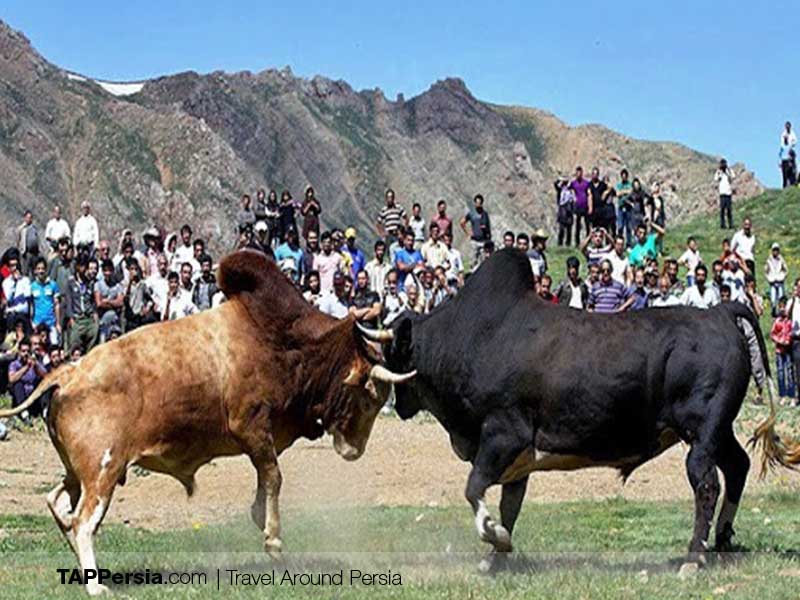
Since farmers finish their farming by fall and winter, these seasons were the best time for the fight. They put garlic on the bulls’ horns to make them sharper and stronger. When the fight between two bulls started it ended when one of them ran away, stopped fighting or died.
Some used to bet on the bulls. For the same reason, the government put an end to these fights. As you know gambling is forbidden in Islam. However, sometimes people hold games illegally in private.
Gal-kar – Clay Mud
Houses in the north were mainly made of wood, mud, and straw. The combination of mud and straw keeps the house warm in winter and cool in the summertime. Every year before Noruz people renewed their houses by doing Gal-kar. They brought clay from the river, mixed it with water, and trampled it for hours to make it ready. Then they put it on walls and floors.
Shatti-bari – Giving Gifts to New Bride and Groom
As we come to the end of our journey to the north of Iran, let me tell you about another beautiful tradition of these people. Giving presents to new couples is a tradition all over the world but in Mazandaran and Gilan, they do it in a very beautiful way. They prepare large trays full of different stuff such as rice, cooking oil, honey, and whatever they think the new couple may need. Wear their colorful dresses, carry the trays on their heads, and lead to the bride’s house. The women walk in a row and a man playing their local instrument, a kind of flute, accompanies them. They sing and dance on their way to the bride.


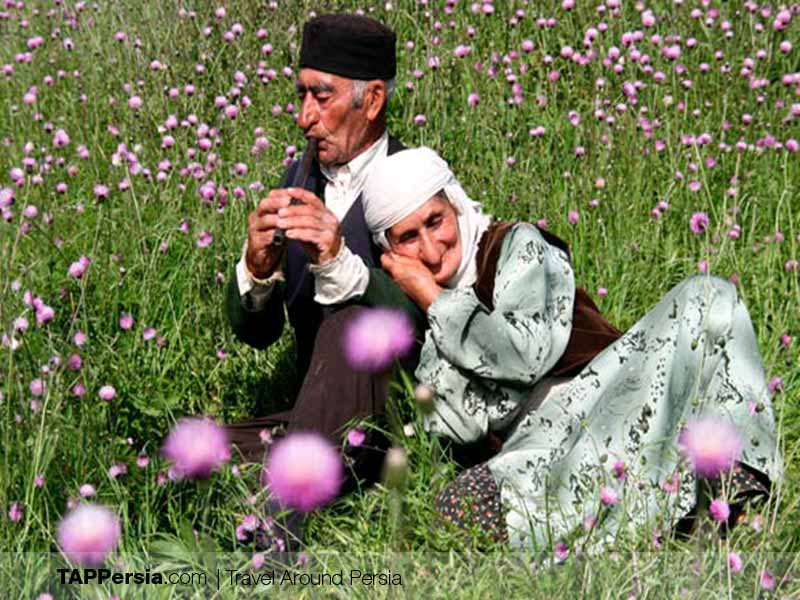
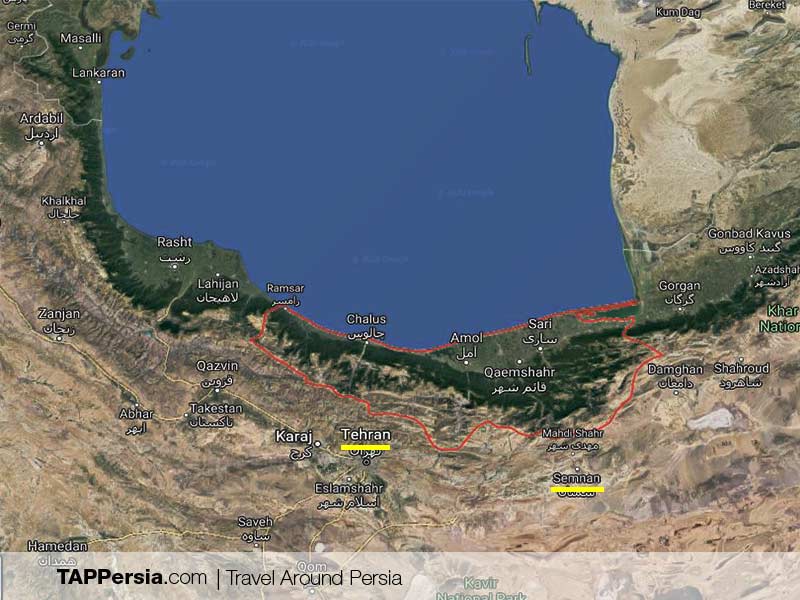

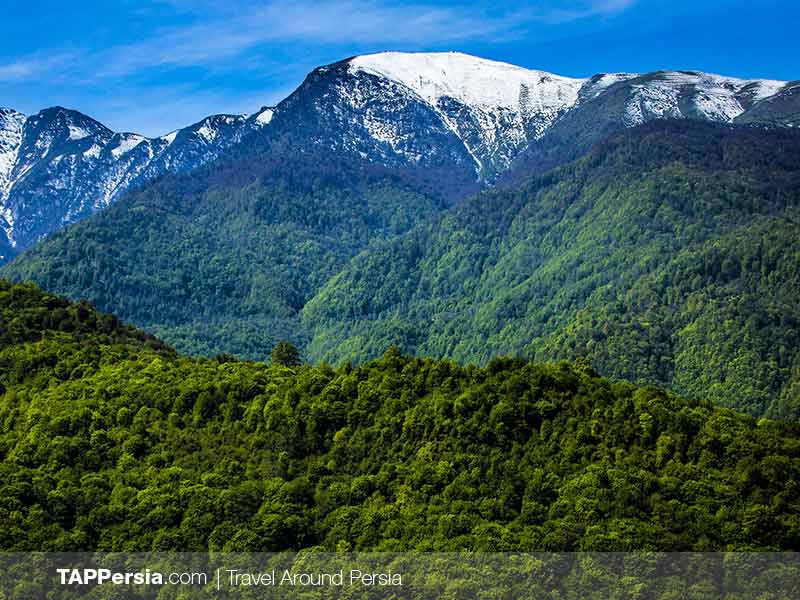
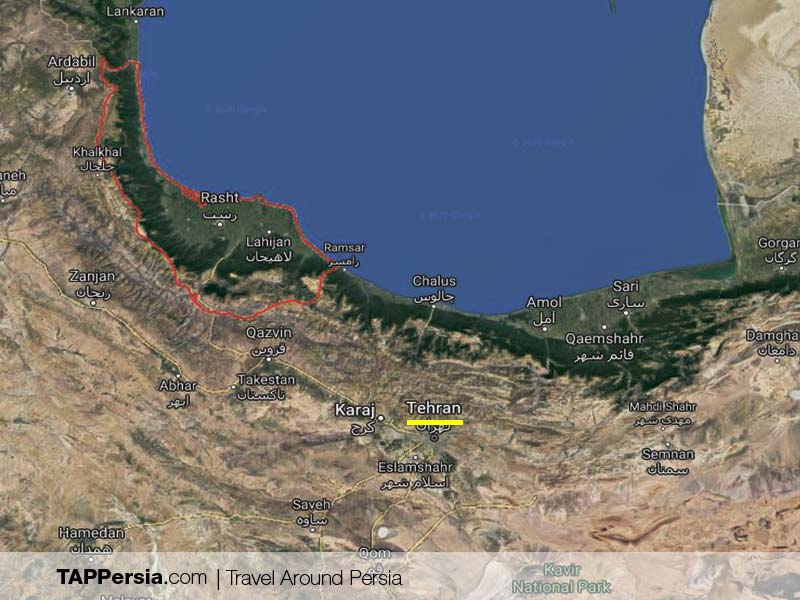
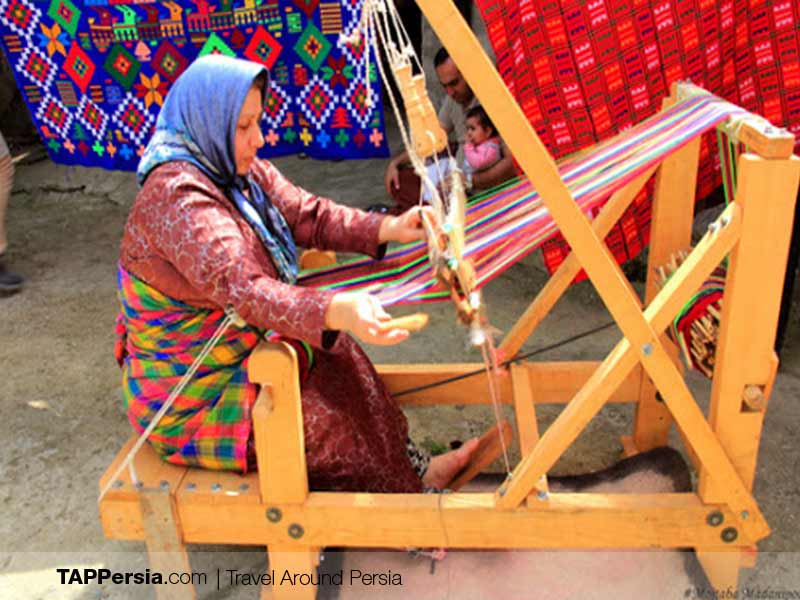
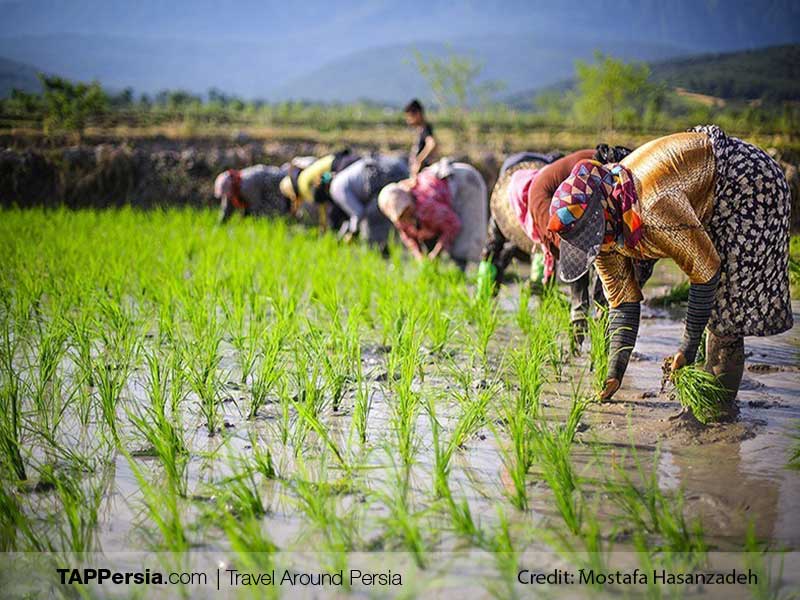
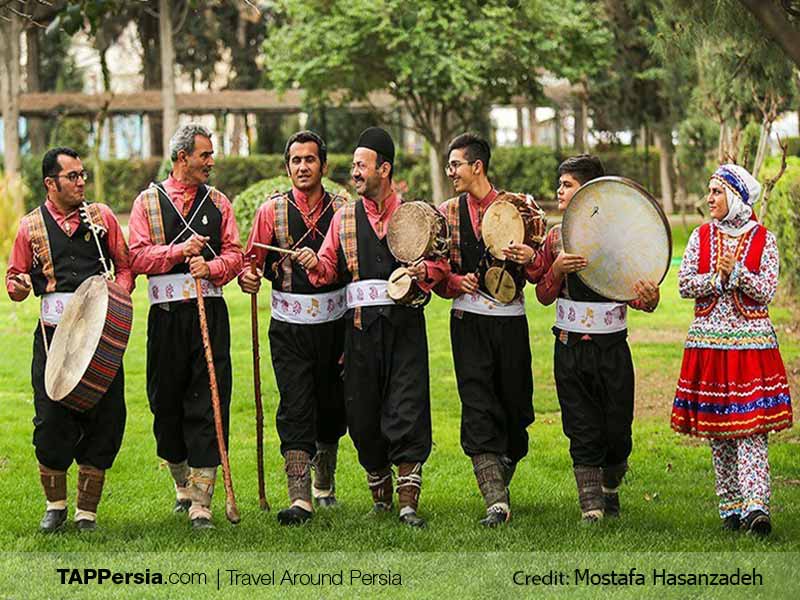
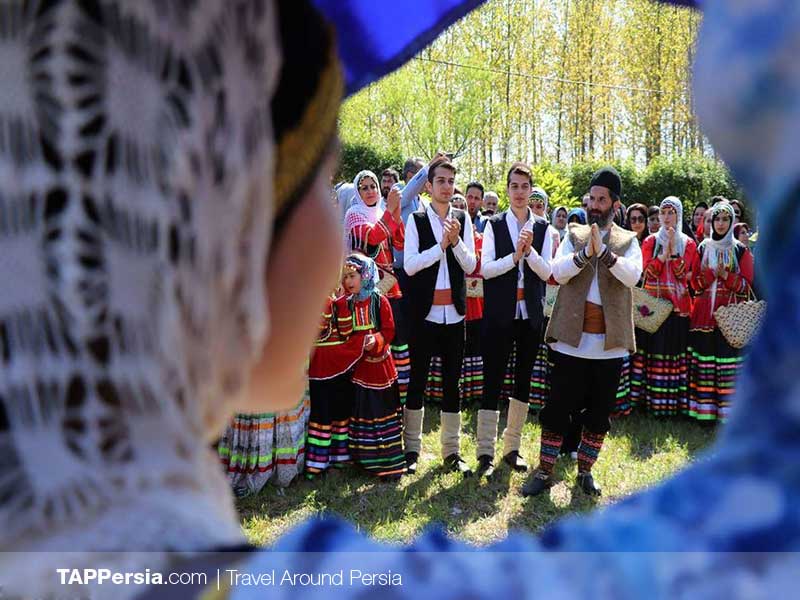




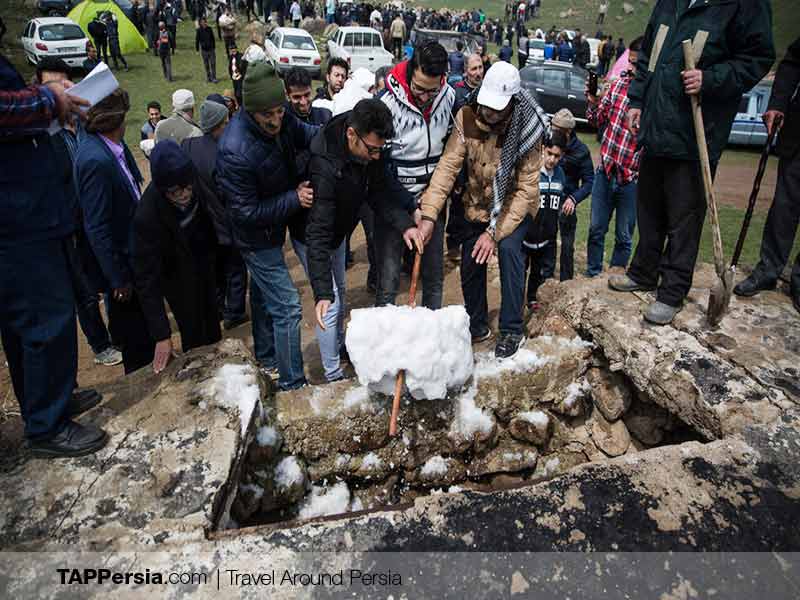
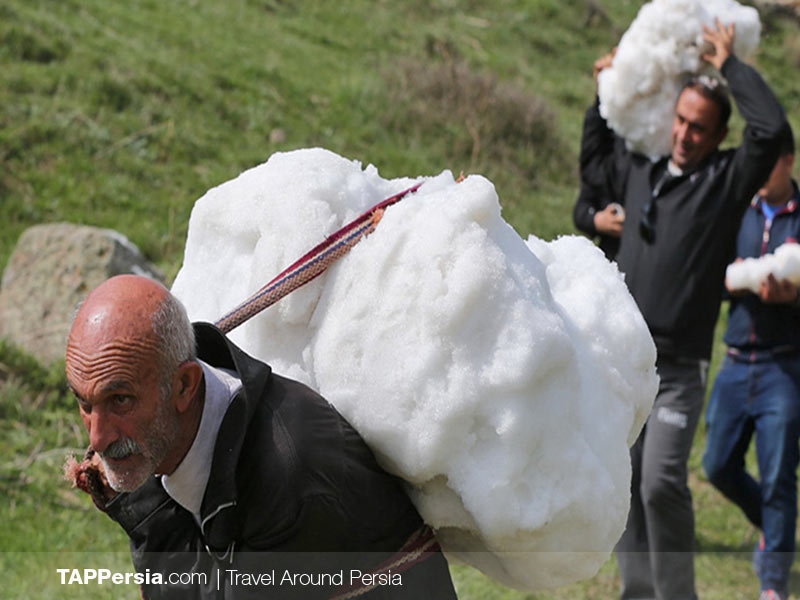
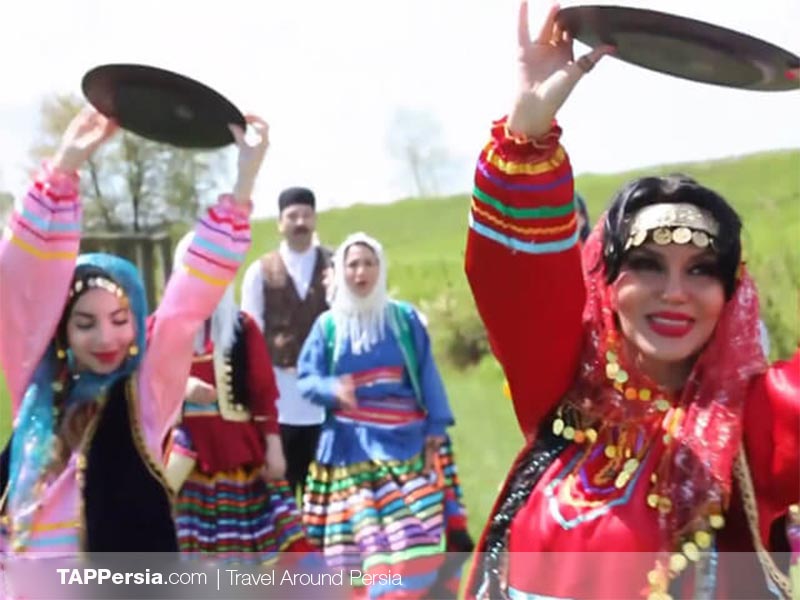
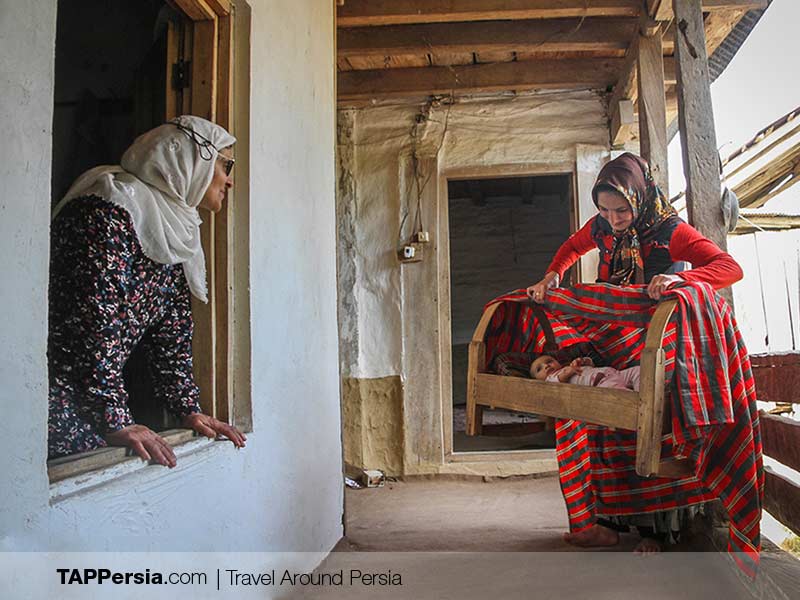
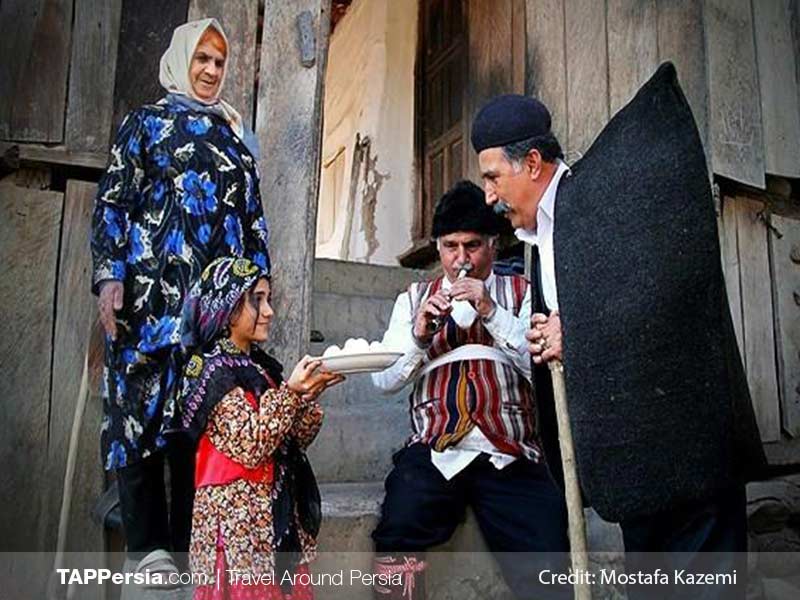
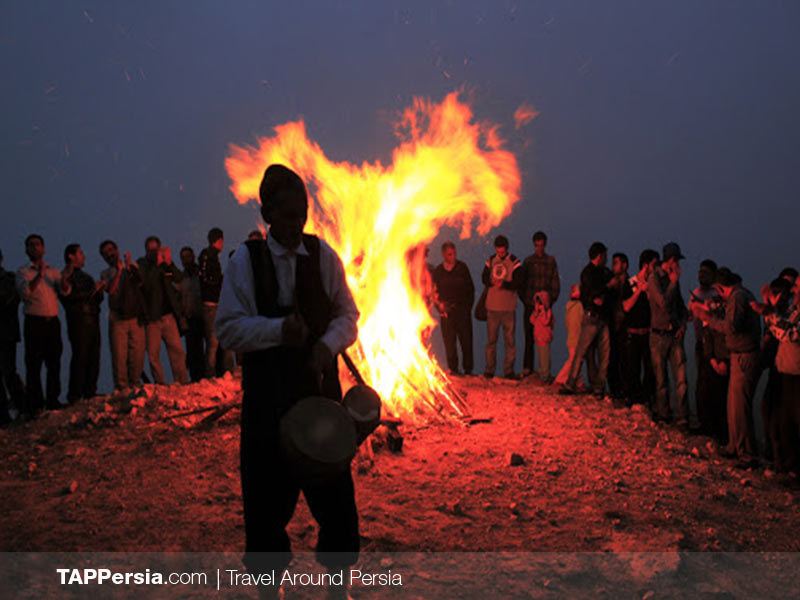
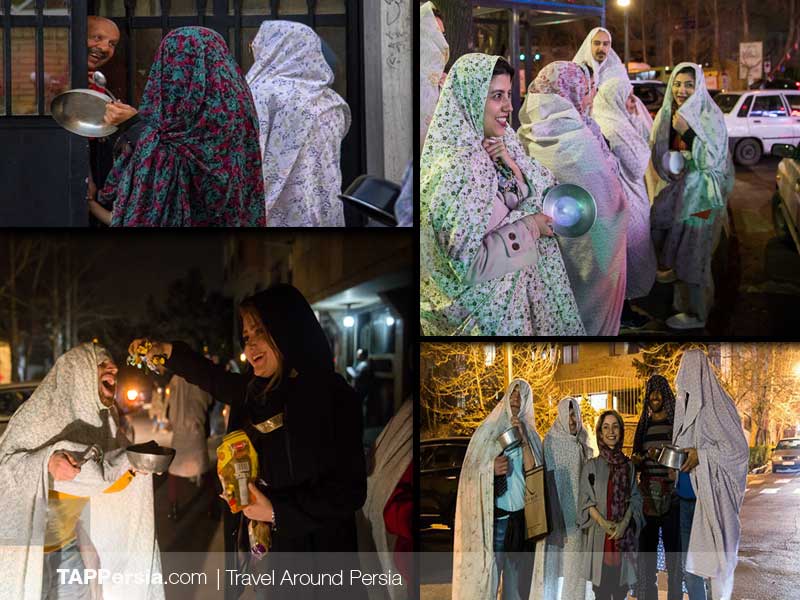
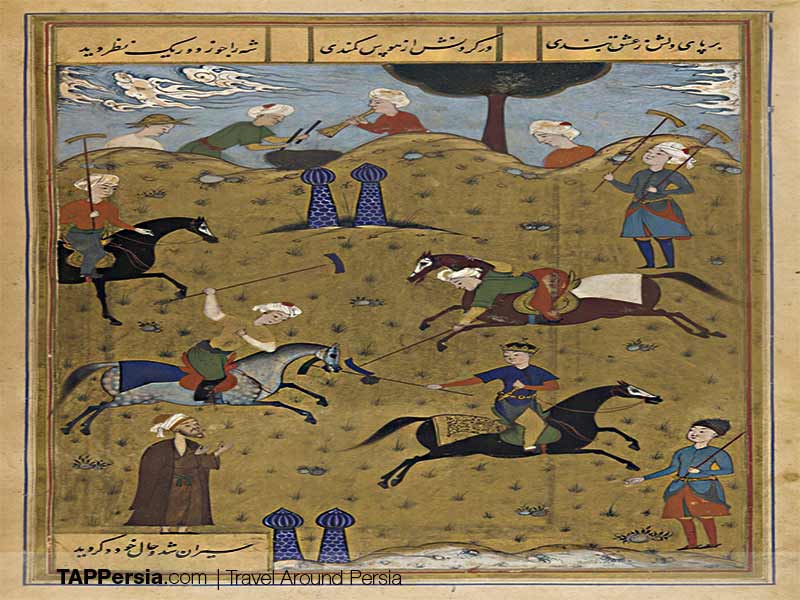
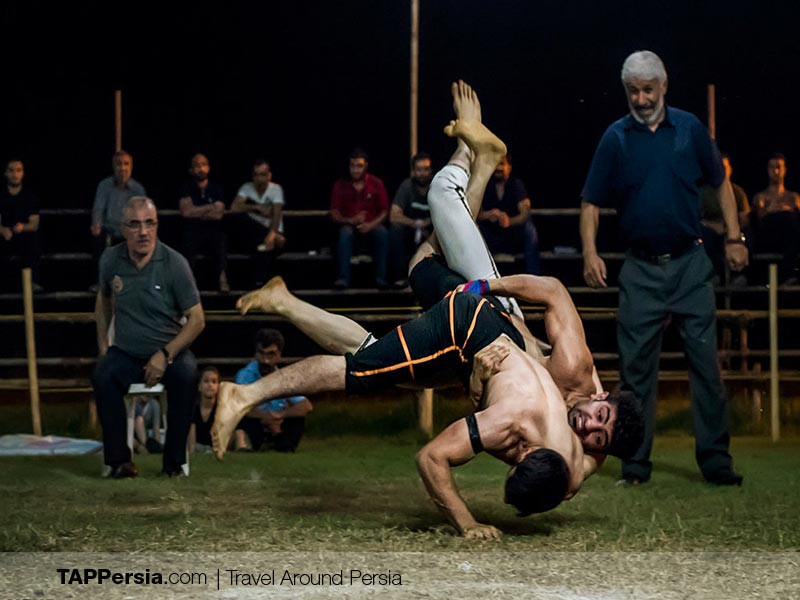
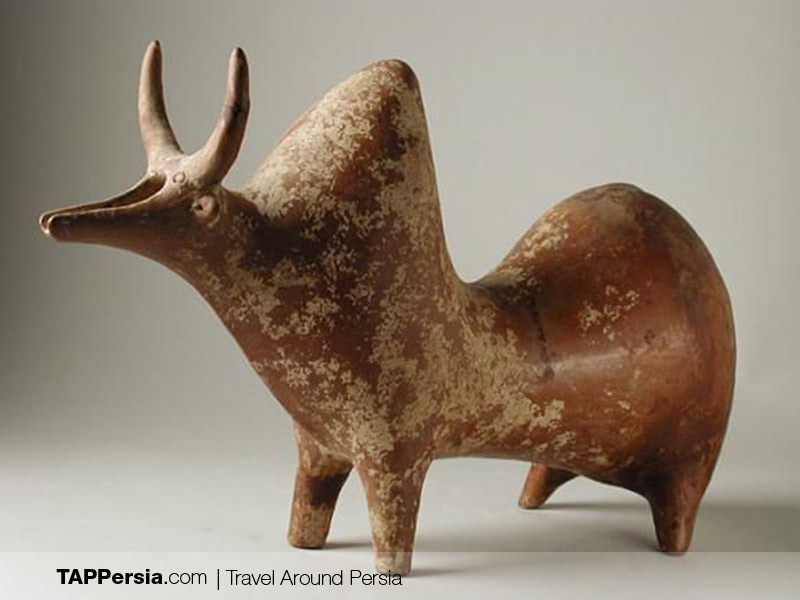
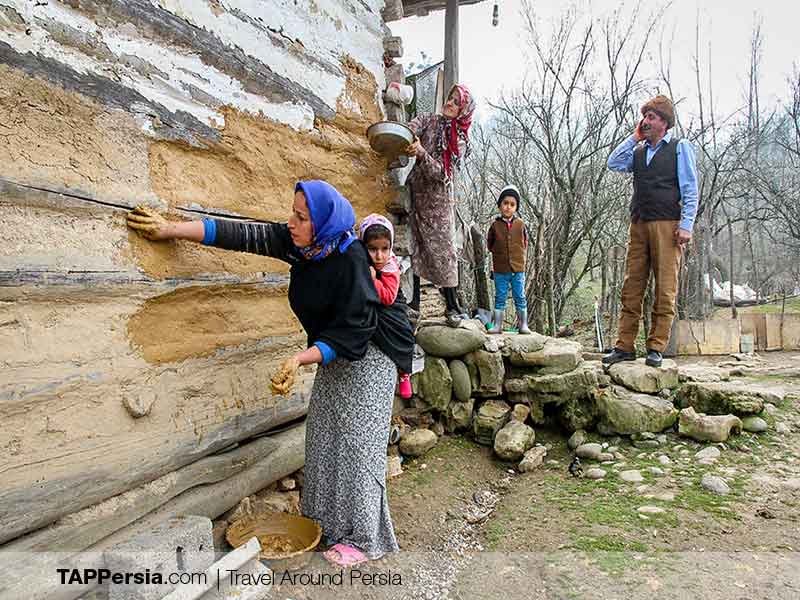
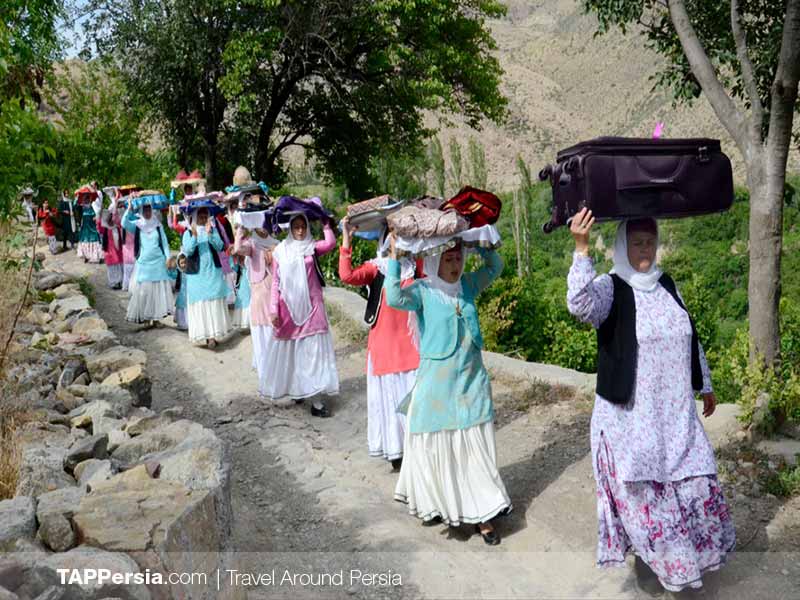
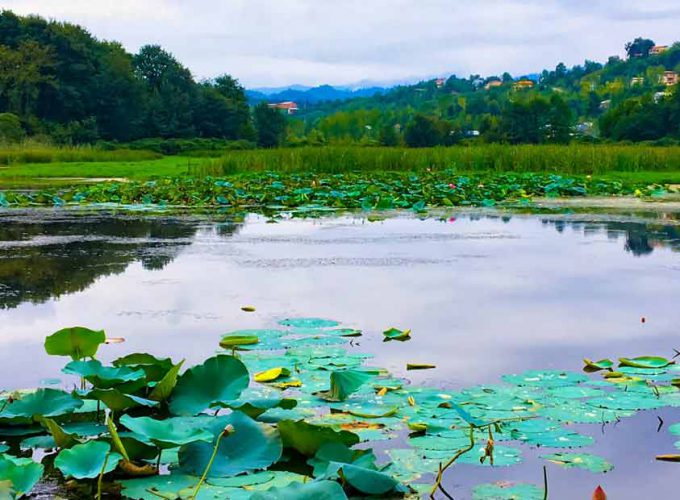
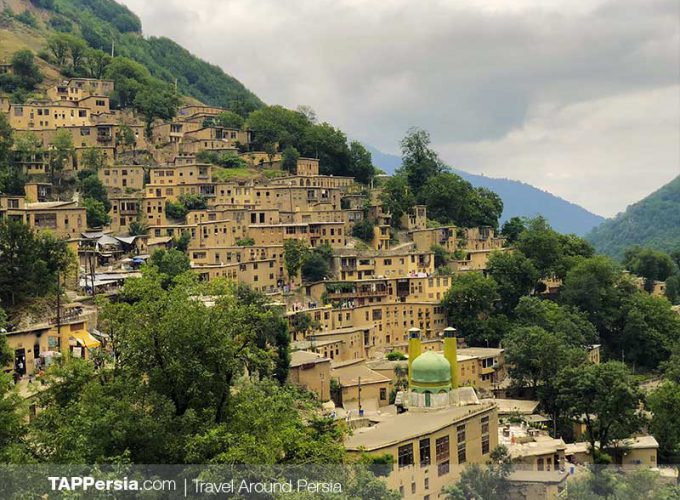
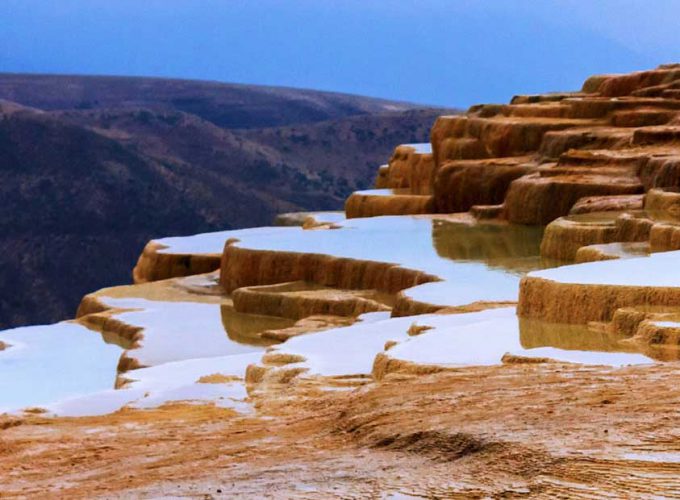
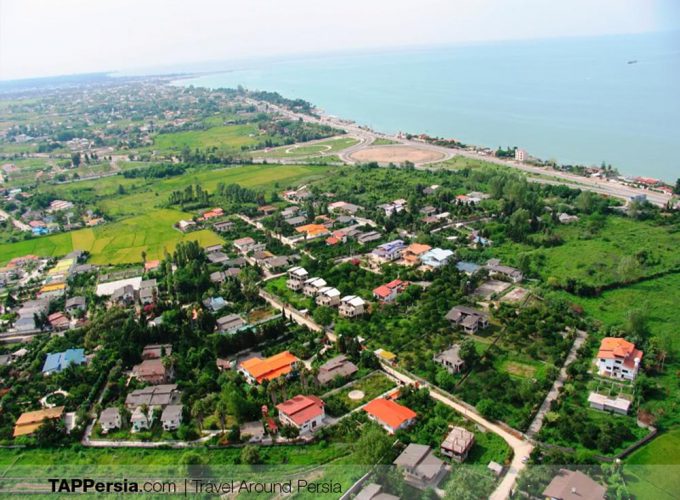
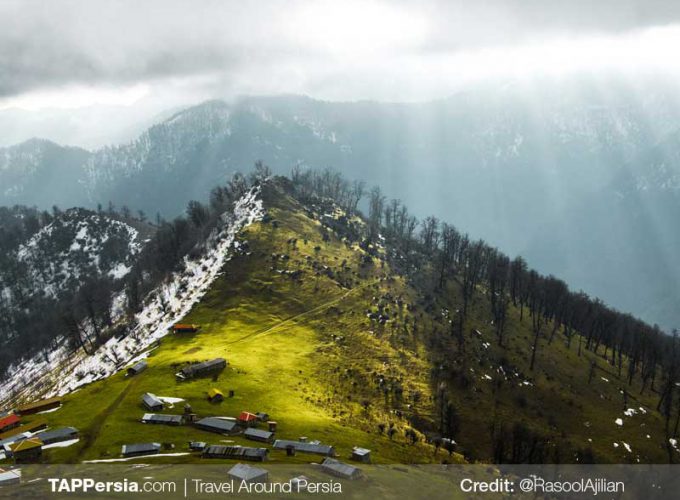
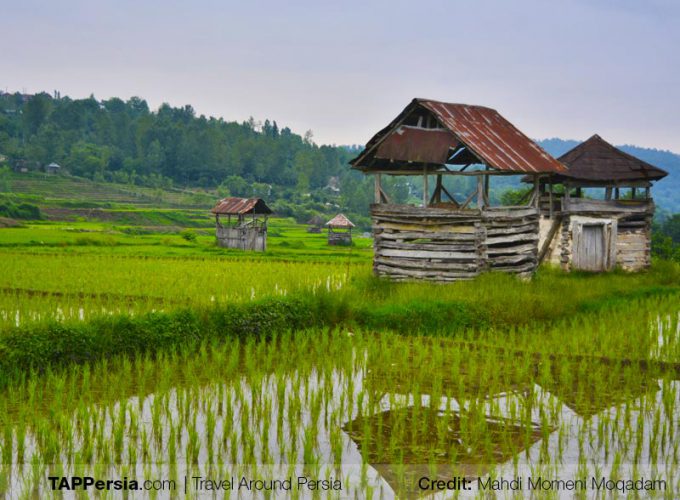


Comment (0)